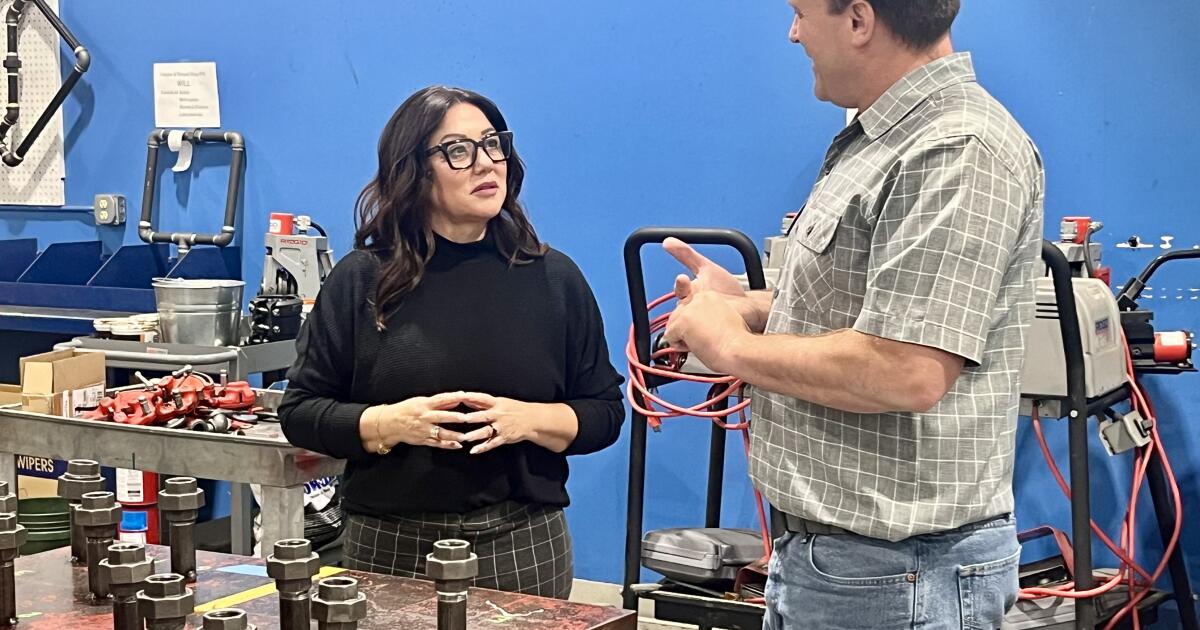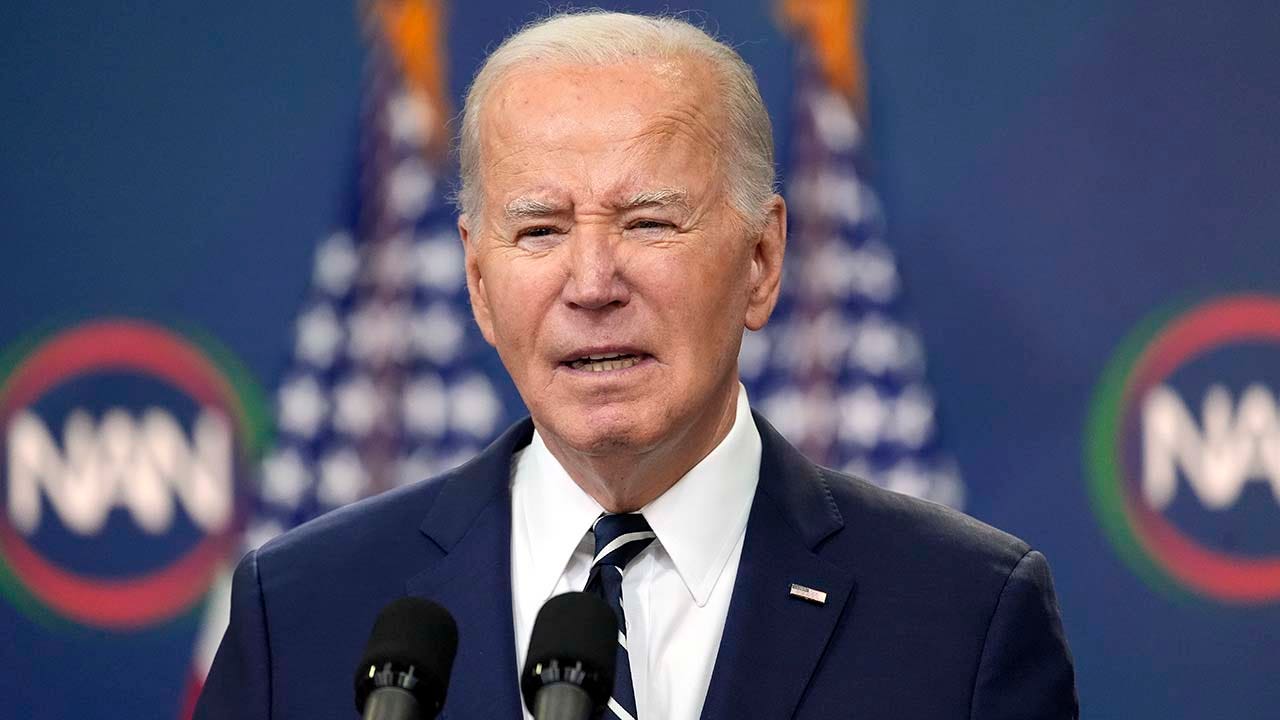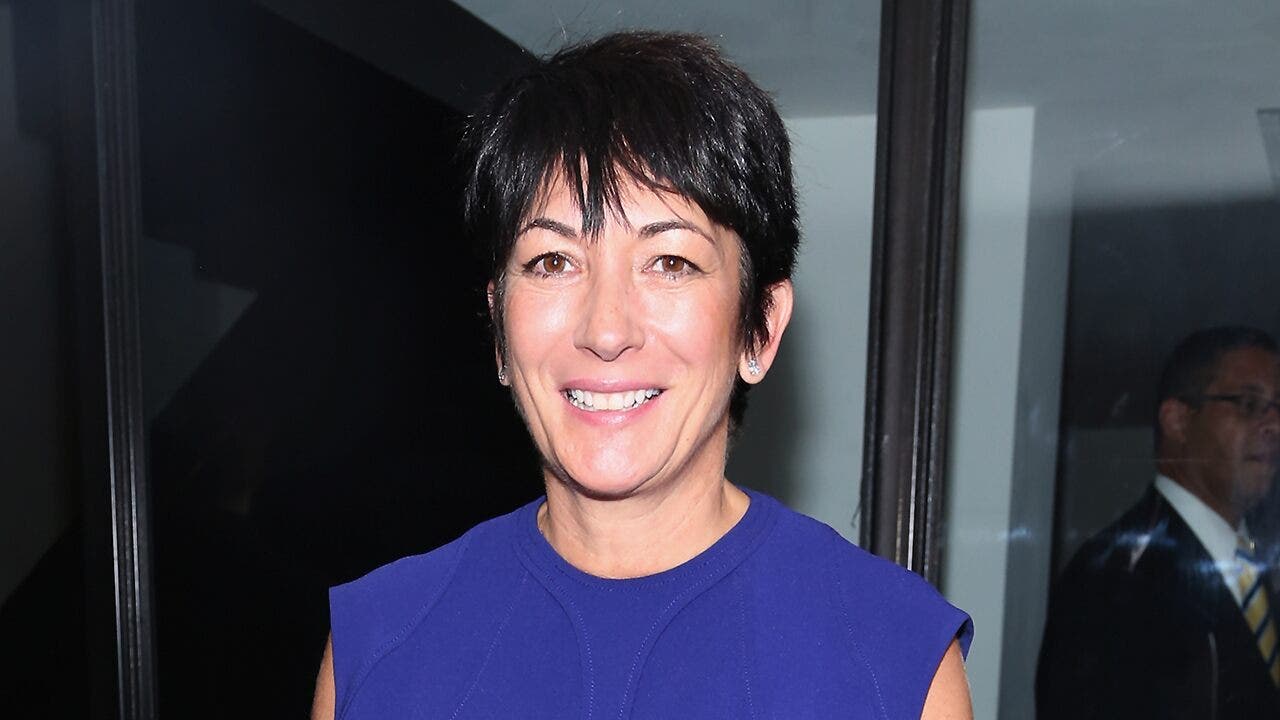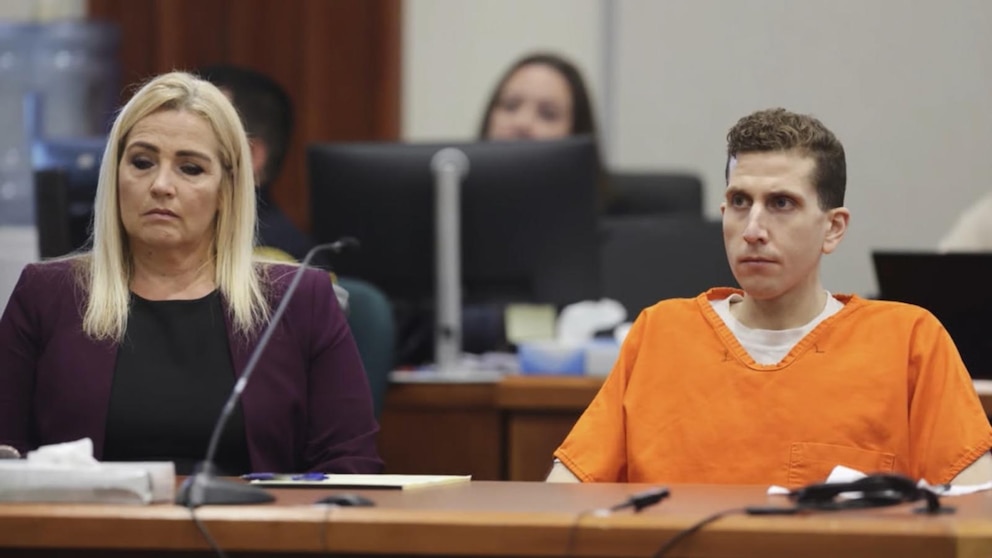Business
Column: An exhaustive debunking of the dumbest myths about Social Security

Myths and canards about Social Security and its supposed fiscal troubles have steadily proliferated over the years. But it’s rare to find them all concentrated in one place as they were in a recent article on the online news site Slate.
Slate paired Eric Boehm, a writer for the conservative magazine Reason, with a writer named Celeste Headlee for a dialogue titled “Social Security Doesn’t Make Sense Anymore.” The roughly 2,000-word piece contained so many misconceptions, inaccuracies, misrepresentations, and flat-out lies about the program that I almost gave up counting. That said, it’s perhaps worthwhile to have a one-stop shop for all these solecisms, if only for the purpose of debunking them en masse.
Most people 65 and older receive the majority of their income from Social Security.
— Kathleen Romig tells the truth about Social Security that Slate missed
The article called for a “radical rethink” of Social Security to make it somehow more relevant to Americans in the modern world. Boehm and Headlee evidently think that’s a world in which America is on the brink of insolvency and can’t afford to spend another dime on the disadvantaged, that Social Security recipients are rich, and that older Americans can have their pick of jobs that will keep them happy and healthy indefinitely.
Slate says their dialogue was “edited for clarity,” but the only thing it made clear is that neither of them knows the first thing about Social Security. More alarming, they showed no inclination to learn.
There isn’t space here or time for me to list every solecism in the piece, so I will focus on some of the most egregious errors.
—“People who are young and working … are funding the retirement of generally wealthier Americans.” This notion was popularized by former Sen. Alan Simpson (R-Wyo.), who went around calling Social Security beneficiaries “greedy geezers” and disdained the program as “a milk cow with 310 million tits.”
The underlying idea is that the average Social Security beneficiaries are doing better than the poor souls in the working class who are paying for their lives of leisure through their payroll taxes. It’s commonly reported that retirees are, on average, the wealthiest cohort of Americans.
Here’s what’s wrong with that idea: The reason that so many seniors are able to live comfortably is because they receive Social Security.
As Kathleen Romig of the Center on Budget and Policy Priorities has reported, “most people 65 and older receive the majority of their income from Social Security.” The poverty rate among Americans older than 65 is 10.3%. Without Social Security, it would be nearly 38%. To put it another way, Social Security keeps more than 15 million seniors out of poverty.
The average Social Security monthly check is $1,709.70, which works out to $20,516 a year. That’s about $800 more than the federal poverty line for a family of two.
The idea that cutting off the wealthiest seniors or at least reducing their benefits would help save Social Security is a popular myth, with recipients like Warren Buffett and Bill Gates the most common illustrative targets. The goal is to promote “means-testing” the program.
But myth it is. As of 2017, about 47,500 millionaires were receiving Social Security. Their total benefits came to about $1.4 billion, or about 15 hundredths of a percent of the $941 billion in benefits the system paid out that year. If you’re intent on “saving” Social Security by means-testing, you would need to start cutting off or reducing benefits for recipients earning about $70,000 a year in non-Social Security income — not millionaires.
Boehm backed up his thoughts on this topic with some suspect data. He cites the Federal Reserve in asserting that “the average value of a retired person’s assets” today is $538,000. Hmm. My reading of the Fed’s latest digest from its Survey of Consumer Finances, issued just last month, places the median net worth of those aged 65-74 at about $410,000; for those 75 and older, it’s $335,600.
Does that make them rich? Using the common rule of thumb that one can spend 4% a year of retirement savings to have the best chance of not outliving your nest egg, $410,000 produces $16,400 a year. Not the basis of a lavish lifestyle. Even a nest egg of $538,000 doesn’t make for a life of leisure — in one’s first year of retirement the 4% rule would yield $21,520.
—Just raise the retirement age? Boehm: “When Social Security began, you could get benefits at age 65, but the average life expectancy in this country was like 61. So the average person actually died before they qualified for Social Security.” This is another quacking canard from the Simpson duck pond.
Average life expectancy from birth in 1940, when the first Social Security checks went out, was about 63 and a half, which I suppose is “like” 61. But that figure was skewed lower by high infant mortality; Boehm acknowledges this, but doesn’t bother to explore its ramifications, perhaps because it explodes his take.
For Americans who made it to their first birthday back then, average life expectancy was nearly 66. For those entering their working careers, say at age 20—the relevant cohort for assessing the chances of collecting Social Security — it was nearly 69.
In other words, the average person did not actually die before qualifying for Social Security; the average person collected for years. Indeed, those who were 65 in the late 1930s lived on average nearly to 78.
Anyway, life expectancy is closely connected to race, educational attainment and income. Those who live longest are whites, college graduates and the affluent. Raising the retirement age is a curse on those who don’t fall into those categories. White people aged 65 have gained more than six years of longevity since the 1930s; Black males only about four years.
By the way, what are workers supposed to do while they’re waiting longer to reach retirement age? Leaving aside the impact of age discrimination that makes it harder for older people to obtain or keep jobs, the Census Bureau has reported that more than half of all workers aged 58 or older were in physically demanding jobs or jobs with difficult working conditions — more than 13 million workers.
As economists Cherrie Bucknor and Dean Baker pointed out in a 2016 paper, “the workers who were most likely to be in these jobs were Latinos, the least educated (less than a high school diploma), immigrants, and the lowest wage earners.”
I don’t know what Boehm’s working conditions are like, but I’d bet they don’t “require dynamic, explosive, static, or trunk strength, bending or twisting of the body, stamina, maintaining balance, or kneeling or crouching” or involve “exposure to abnormal temperatures, contaminants, hazardous equipment, whole body vibration, or distracting or uncomfortable noise.” It’s easy to think that everyone else should work harder, if your frame of reference is your own office desk.
—Social Security is “a welfare program”: Boehm pushed this idea hard. “You would never build a welfare program, you would never get Congress to approve the construction of a new welfare program, that took money directly from the paychecks of workers and transferred it to a wealthy cohort somewhere in this country,” he says.
There’s a manifest danger in calling Social Security a welfare program. That’s because welfare programs are easiest to axe when conservatives go hunting for budget cuts — Americans typically view them as serving layabouts and malingerers at their expense.
Social Security is nothing like a welfare program, however. It’s a contributory system, funded entirely by its beneficiaries through the payroll tax. Its benefits are tied to lifetime contributions. That’s why billionaires get it, too — they contributed to it during their working lives. Nor is it only an old-age pension: It encompasses disability benefits and insurance to cover spouses and children when their breadwinner suffers an untimely death.
Before Republicans started casting “entitlements” as a dirty word, Americans saw their entitlement to Social Security benefits as a blessing — most still do. They’re entitled to it because they’ve paid for it with every paycheck.
The idea that the system represents a war between seniors and younger generations is just wrong. Whatever fiscal problems face Social Security, it’s because it’s exploited by the wealthy at the expense of everyone else.
In 1937, when the payroll tax was first collected, it applied to about 92% of all earned income. By 2020, that figure had fallen to 83%, largely because of an increase in income inequality. Were the payroll tax to be restructured to cover 90% of earnings, as the Congressional Budget Office reported last year, that would produce an additional $670 billion in revenue over 10 years; raise it to cover all annual earnings over $250,000, the gain would be $1.2 trillion — all without cutting benefits by even a penny.
—Social Security “is going to hit a brick wall in the 2030s.” This is Boehm’s gloss on the familiar projection that the program’s trust fund will run out some time in the middle of that decade. Is that a “brick wall”? Hardly: At that point, the program will still be guaranteed enough revenues to continue paying three-quarters of all scheduled benefits.
That’s a middle-of-the-road estimate. The system’s actuaries have also projected that given alternative demographic and economic assumptions — including assuming the unemployment rate and economy stay where they are today and immigration rises closer to its historical norm, the program might even be able to pay all benefits indefinitely.
—”The cost of Social Security is … ballooning quite rapidly”: This holds no water at all. The CBO projects that Social Security benefits as a share of gross domestic product, currently 5.1%, will rise to 6.2% by 2053. If that’s a balloon, it’s inflating pretty slowly.
In that time span, incidentally, GDP will more than triple to $79.5 trillion from $26.2 trillion, according to the CBO.
Boehm’s argument is that Social Security is becoming such a fiscal burden that it’s “killing the safety net.” He says, “There’s not enough money to go around,” which is absurd to say about the richest nation in world history. He says the cost of Social Security and Medicare, which he seems to think, erroneously, are related programs, is “pushing other things to the budget into a territory where we have to borrow more money to pay for them.”
That’s obviously not so. We wouldn’t have to borrow if we took such reasonable steps as repealing the 2017 tax cuts for corporations and the rich that drove a hole into the federal budget, or started charging the wealthy for their fair share of Social Security. He mentions that Americans have experienced “decades of greater prosperity,” but not that the benefits of that prosperity have been collected overwhelmingly by the 1%.
Boehm and Headlee plainly intended to tell it like it is on Social Security. Unfortunately, their effort was hampered by lack of information. Would it have killed them to do even a little research?

Business
Former CBS and Disney TV executive James Stark Bennett dies at 78

Television executive James Stark Bennett II, known for developing talk show “Live with Regis and Kathie Lee,” has died at 78.
Bennett, who went by Jamie, died July 6 after a fight with cancer, according to his family.
He spent more than a decade at CBS, where he was an executive at television and radio stations in San Francisco and Chicago before coming to Los Angeles, where he served as vice president and general manager at KCBS-TV.
Bennett then moved over to the Walt Disney Co., where he served as senior vice president of Buena Vista Television Productions. In that role, he developed such shows as “Live with Regis and Kathie Lee,” “Siskel & Ebert” and the game show “Win, Lose or Draw.”
He later became president and chief executive at ACI, a Los Angeles-based TV and film distributor. When ACI was bought by Britain-based Pearson Television in 1995, Bennett and his family moved to London, where he ran the company’s worldwide production.
He eventually moved back to L.A., where he got involved in volunteer work and expanded his career beyond the entertainment industry by becoming chief operating officer at the Southern California Institute of Architecture. There, he was instrumental in helping the school establish its permanent base in L.A.’s Arts District, his family said. He also served on the board of the Ojai Music Festival, later becoming its president and CEO for five years until 2020.
Bennett was born in New York City on June 1, 1947. He later graduated from UC Berkeley, where he chaired a student-run summer program in Washington, D.C., and started his media career as the program director for the university’s radio station. After getting his MBA from Harvard Business School, he moved back to New York to take a job at CBS, which launched his media career.
He and his wife, Carolyn, eventually purchased an 11-acre farm in Ojai, which became their permanent residence. Bennett is survived by his wife, Carolyn, their three children and other family members.
Business
Uvalde school shooter was fueled by Instagram and 'Call of Duty,' L.A. lawsuit alleges

Tess Mata’s parents were once enthusiastic about social media. The 10-year-old from Uvalde, Texas, wanted to be TikTok famous. She used to dance, sing and imitate popular trends on her videos, with mom Veronica and dad Jerry keeping a watchful eye on her online habits.
But then Tess was gunned down at Robb Elementary School in 2022, one of 19 children and two teachers killed by a former student.
Since then, as details of the shooter’s personal life have become public, the Matas and a handful of other Uvalde families have come to believe that his exposure to gun content online and in video games led to the tragedy.
Jerry and Veronica Mata stand in front of the Spring Street Courthouse on July 17 in Los Angeles. After their daughter Tess was killed in the school shooting in Uvalde, Texas, the couple are suing Meta, Activision and Daniel Defense in an attempt to challenge social media and video game marketing that they say urged the shooter to commit violence.
(Juliana Yamada / Los Angeles Times)
They are now suing three companies they allege profited off the violent fantasies that led to their children’s deaths. The defendants include the maker of “Call of Duty,” a first-person military shooter game where they say 18-year-old Salvador Ramos encountered a virtual version of a Daniel Defense-branded AR-15 he used in the attack. They are also suing Meta, alleging Ramos encountered ads for the gun that promoted violence on Instagram.
The Matas and three other families from Uvalde will travel more than 1,200 miles this week to confront the companies in L.A. County Superior Court, where they have filed claims for negligence, aiding and abetting and wrongful death.
“They glorify these weapons. They made it enticing for young kids to want to purchase these guns, and kids that young are so receptive to these types of things,” Veronica Mata told The Times.
Activision, the Santa Monica-based video game developer, has filed for dismissal, arguing that the 1st Amendment protects “Call of Duty” as a work of art. Meta has also fought to have the case tossed, pointing to well-established case law that shields social media platforms from liability for third-party content posted by users and advertisers.
Whether the case proceeds could be decided at a hearing Friday in downtown L.A.

Jerry Mata holds dog tag necklaces of his daughter Tess, one of 19 students killed at Robb Elementary School in Uvalde, Texas, in 2022.
(Juliana Yamada / Los Angeles Times)
The families allege “Call of Duty,” one of the top-grossing video game franchises in the world, encouraged violence by catching Ramos in a repeated gameplay loop with real-world weapons. And they claim Instagram equipped him with the knowledge of how, when and where to buy the gun he used.
“To put a finer point on it: Defendants are chewing up alienated teenage boys and spitting out mass shooters,” the complaint claims, noting that the three most deadly K-12 school shootings in American history — Uvalde, Parkland and Sandy Hook — were all committed by young men who played “Call of Duty” and used an AR-15.
“Call of Duty is a simulation, not a game. It teaches players how to aim, reload, and fire accurately, while habituating the teenage nervous system to inflict repeated, graphic violence. And though the killing is virtual, the weapons are authentic,” the complaint alleges.
Ramos’ choice of the Daniel Defense AR-15 was intentional, the lawsuit said. The small weapons manufacturer has a market share of less than 1%, but a specific rail displayed on a popular “Call of Duty” gun made it easily identifiable to players online despite a lack of branding inside the game.
“It is the Defendants who gave Daniel Defense a direct line into children’s homes and heads, who wrote a playbook for how to peddle firearms while circumventing parents and the law, and who created a simulation with real-life weapons and applauded children for their proficiency at killing,” the complaint said.
Meta did not immediately respond to The Times’ request for comment, nor did Daniel Defense, another defendant in the lawsuit.

A photo of a weapon next to the truck that the Robb Elementary School shooter crashed before the shooting on May 24, 2022.
(Pete Luna / Uvlade Leader-News)
Courts have long rejected the idea that violent video games like “Call of Duty” are responsible for the actions of those who play them despite the moral panic surrounding the issue, and have also overturned efforts to restrict minors’ access to them.
Most modern “Call of Duty” games are rated for mature audiences over 17 by the Entertainment Software Ratings Board, but are available to minors through online marketplaces that don’t meaningfully verify someone’s age before purchase.
“Any adolescent that wants to download Call of Duty can do that,” Josh Koskoff, a lawyer for the Uvalde families, told The Times.
A 2011 Supreme Court case, Brown vs. Entertainment Merchants Assn., struck down a 2005 California law that banned the sale of violent video games to minors. There was “no tradition in this country of specially restricting children’s access to depictions of violence. … Grimm’s Fairy Tales, for example, are grim indeed,” the late Justice Antonin Scalia wrote in the 7-2 majority opinion.
Activision has long defended its games as protected artistic expression despite criticism of its extreme violence, which sometimes involves players killing other combatants — almost never allowing civilian casualties — in combat simulations, sometimes in public arenas like airports and urban sprawls.
“Call of Duty tells complex stories that explore the real-world combat scenarios that soldiers face in modern warfare. There can be no doubt Call of Duty is expressive and fully protected by the First Amendment,” the company said in a court filing.
The families still mourning their children say challenging the institutions that failed to protect them has been an ongoing fight. The new case is another chapter which feels like taking on giants, Veronica Mata said.

A woman walks near “Call of Duty” publicity on Dec. 7, 2022, in New York City.
(VIEW press / Corbis via Getty Images)
The city of Uvalde approved in May a $2-million settlement for a flawed police response to the shooting, and a Texas appeals court Wednesday ordered the release of documents from the school board and county about the shooting, local news reported.
“We can step forward, and we can make that change and make them understand that what they’ve done and what they continue to do is not benefiting them or anybody else,” Mata said.
Business
Commentary: She looked like a pro-worker Trump cabinet appointee. But now she's gutting the Labor Department

You may have detected a cautious note of relief among worker advocates when Donald Trump named Lori Chavez-DeRemer as his secretary of Labor.
During her sole term as a Republican member of Congress from Oregon (2023-25), Chavez-DeRemer was one of only three House Republicans to vote in favor of the so-called PRO Act, which would significantly strengthen collective bargaining rights. The measure passed the House in 2019 and 2021 but has been stifled ever since.
Her nomination and subsequent Senate confirmation elicited optimistic noises from the pro-union camp, as I reported in December.
This is an onslaught on people’s basic protections at work.
— Rebecca Reindel, AFL-CIO
“Her record suggests real support of workers & their right to unionize,” tweeted Randi Weingarten, president of the American Federation of Teachers, when Trump nominated Chavez-DeRemer in November.
AFL-CIO President Liz Shuler said she was “encouraged” by Chavez-DeRemer’s confirmation in March, “given her history of supporting the freedom of workers to organize, join unions and other fundamental values of the labor movement.”
The union leaders tempered their optimism with concerns about the anti-labor policies emanating from the Trump White House: Weingarten said she hoped the appointment signaled that “the Trump administration will actually respect collective bargaining and workers’ voices,” and Shuler said the AFL-CIO was “clear-eyed” that Chavez-DeRemer would be “joining an administration that’s been openly hostile to working people on many fronts in its first two months.”
Can you guess which way the ball has bounced?
On May 1, the Labor Department ordered its staff to cease enforcing a Biden administration rule that had raised the bar preventing businesses from designating their workers as independent contractors instead of employees, depriving those workers of the legal protections and wage and hour benefits typically due employees.
A few days later, Chavez-DeRemer submitted a proposed budget to Congress that would slash her agency’s discretionary funding by more than 35%, to $8.6 billion from $13.2 billion, and cut its workforce by nearly 4,000 full-time workers, a reduction of more than 26%. Among the services to be eliminated would be the Job Corps, which assists low-income youth to complete their high school education and provides job training and placement. (A federal judge in New York has blocked the suspension of Job Corps services and set a hearing for Monday.)
On July 1 came what could be the biggest blow. Chavez-DeRemer announced a plan to rescind 63 regulations that had been designed to help workers. With language that sounds cribbed from the MAGA playbook, she said her goal is to “eliminate unnecessary regulations that stifle growth and limit opportunity.”
She boasted of launching “aggressive deregulatory efforts in push to put the American worker first,” and added that “these historic actions will free Main Street, fuel economic growth and job creation, and give American workers the flexibility they need to build a better future.”
I’ve asked the Labor Department to provide specific rationales for the deregulatory actions but haven’t received a reply.
The effects, however, are clear. “Two-thirds of these have to do with worker health and safety protections,” says Rebecca Reindel of the AFL-CIO. “They’re being proposed to be either eliminated or severely weakened.”
Chavez-DeRemer’s actions as Labor secretary resemble less the image she fostered as a member of Congress than the policymaking of Trump’s first term. Then, as I wrote at the time, the Department of Labor was “a black hole for worker rights.” His second Labor secretary, Eugene Scalia (son of the late Supreme Court Justice Antonin Scalia), had made his name professionally as a corporate lawyer fighting pro-worker government initiatives.
The standards on the chopping block include those issued by the Occupational Safety and Health Administration, a unit of the Labor Department, that were developed after years of effort. OSHA standards, Reindel told me, take an average of seven years — and as long as 20 years — to draft. “This is an onslaught on people’s basic protections at work.”
One category of threatened regulations applies to standards for respirators and filters to screen out workplace pollutants including asbestos, arsenic and lead. The department proposes to eliminate requirements that workers exposed to occupational pollutants be medically evaluated to ensure that their respirators fit properly and don’t cause health problems on their own.
The agency, asserting that such rules are “unnecessarily prescriptive,” proposes to give employers “greater flexibility in the respirators they select for exposed workers.” Removing some of these regulations, Reindel says, “basically would allow employers to make the determination if a respirator is needed for specific chemicals. They’d give employers more flexibility at the expense of workers’ health.”
One of the more potentially far-reaching proposals would narrow the application of OSHA’s “general duty clause,” which requires employers to maintain safe workplaces even when no specific OSHA regulation applies. In the most notable case, OSHA cited the clause in fining SeaWorld of Florida $12,000 in connection with the 2010 killing of trainer Dawn Brancheau by an orca during a performance. SeaWorld sued to overturn the penalty but lost in a 2-1 decision by the federal appeals court in Washington, D.C.
The three-judge panel found that even though the dangers of cavorting with wild animals for a public show were understood, SeaWorld should have done more to protect its human performers. (Who represented SeaWorld in that case? Eugene Scalia.)
The department is proposing to exempt from the rule “professional, athletic, or entertainment occupations” that are intrinsically dangerous. In justifying its proposal, the department cites a dissenting opinion in the appellate case by then-Appeals Judge Brett Kavanaugh, who is now on the Supreme Court.
In his dissent, Kavanaugh maintained that the agency exceeded its Congressional mandate: “The bureaucracy at the U.S. Department of Labor has not traditionally been thought of as the proper body to decide whether to ban fighting in hockey, to prohibit the punt return in football, to regulate the distance between the mound and home plate in baseball, to separate the lions from the tamers at the circus, or the like,” he wrote. The Department of Labor now maintains that Kavanaugh’s analysis, even though it was a minority finding, was right.
More than 115,000 athletes, actors and other entertainers could be affected by the change, the agency acknowledges.
The department also proposes to rescind a 2024 regulation that guaranteed the right of migrant agricultural workers to host union organizers in company-owned housing.
The Biden administration asserted that the regulation was needed to “protect workers’ fundamental rights of association” and observed that the isolation of workers in company-furnished quarters and their “unique vulnerabilities renders them particularly at risk of … workplace abuses, labor exploitation, and trafficking.”
The department, however, cites several court rulings in red states that have held that the regulation was “an infringement on the property rights of employers.” Indeed, that was the reasoning of the Supreme Court in overturning a California law providing for similar access on farm property in 2021.
“The access regulation grants labor organizations a right to invade the growers’ property,” wrote Chief Justice John Roberts for a 6-3 majority, with the court’s three liberal justices dissenting. “It therefore constitutes a per se physical taking” without compensation.
Worker advocates fear that the July 1 announcement is a precursor of more rollbacks to come. “I think the announcement is just the beginning of their deregulation effort,” says Margaret Poydock, a senior policy analyst at the labor-affiliated Economic Policy Institute. “These 63 rules they referenced were just two days’ worth of posting.”
One rulemaking effort that worker advocates are watching closely involves heat-related injuries. A proposed rule was posted in August and is still under consideration, with bipartisan support; public hearings on the rule were completed earlier this month, and final action is expected by the end of September. The Trump administration hasn’t taken any steps to quash it, thus far. But it has been fiercely opposed by business interests.
The U.S. Chamber of Commerce, for instance, submitted a 20-page comment arguing that the proposal “would result in OSHA micromanaging workplaces, imposing unreasonable burdens, and creating confusion as to what employers would be required to do.”
The proposal, which would apply to almost all employers, would be triggered whenever employees were exposed to a heat index — a measure taking into account heat and humidity — of 80 degrees or higher for more than 15 minutes in an hour-long period.
In those conditions, employers would be required to supply cool drinking water, break areas with cooling and paid rest breaks, among other measures. A heat index of 90 degrees would require mandatory rest breaks of 15 minutes every two hours and other heightened measures.
In the absence of a specific federal heat regulation, workplaces are subject to the general duty clause. But that’s inadequate, worker advocates say. “The general duty clause is reactive — it addresses what happens once a worker is already exposed,” Poydock told me. “It does not prevent workers from becoming sick from heat or having heat stroke or dying from heat.”
The Chamber’s objection is that the current proposal is a “one-size-fits-all approach” that fails to account for regional conditions.
“Businesses operating in consistently high-heat regions, such as Arizona, Florida, and Texas, where these temperatures are the norm,” would be disproportionately affected. “People in hotter climates tend to be more acclimatized to heat, including working in temperatures above 80° F, and thus have a lower risk of heat injury or illness.”
The labor leaders who once saw a glimmer of light in Chavez-DeRemer’s appointment have seen their hopes dashed. Until recently, one might have said that the jury was out on whether she would be a good Labor secretary or another MAGA cabinet member. Now, sadly, the jury’s verdict is in.
-

 Iowa1 week ago
Iowa1 week ago8 ways Trump’s ‘Big, Beautiful Bill’ will affect Iowans, from rural hospitals to biofuels
-

 Politics1 week ago
Politics1 week agoConstitutional scholar uses Biden autopen to flip Dems’ ‘democracy’ script against them: ‘Scandal’
-

 Politics1 week ago
Politics1 week agoDOJ rejects Ghislaine Maxwell’s appeal in SCOTUS response
-

 Health1 week ago
Health1 week agoNew weekly injection for Parkinson's could replace daily pill for millions, study suggests
-

 News1 week ago
News1 week agoSCOTUS allows dismantling of Education Dept. And, Trump threatens Russia with tariffs
-

 Culture1 week ago
Culture1 week agoTest Your Knowledge of French Novels Made Into Musicals and Movies
-
Business1 week ago
Musk says he will seek shareholder approval for Tesla investment in xAI
-

 Sports1 week ago
Sports1 week agoEx-MLB pitcher Dan Serafini found guilty of murdering father-in-law















